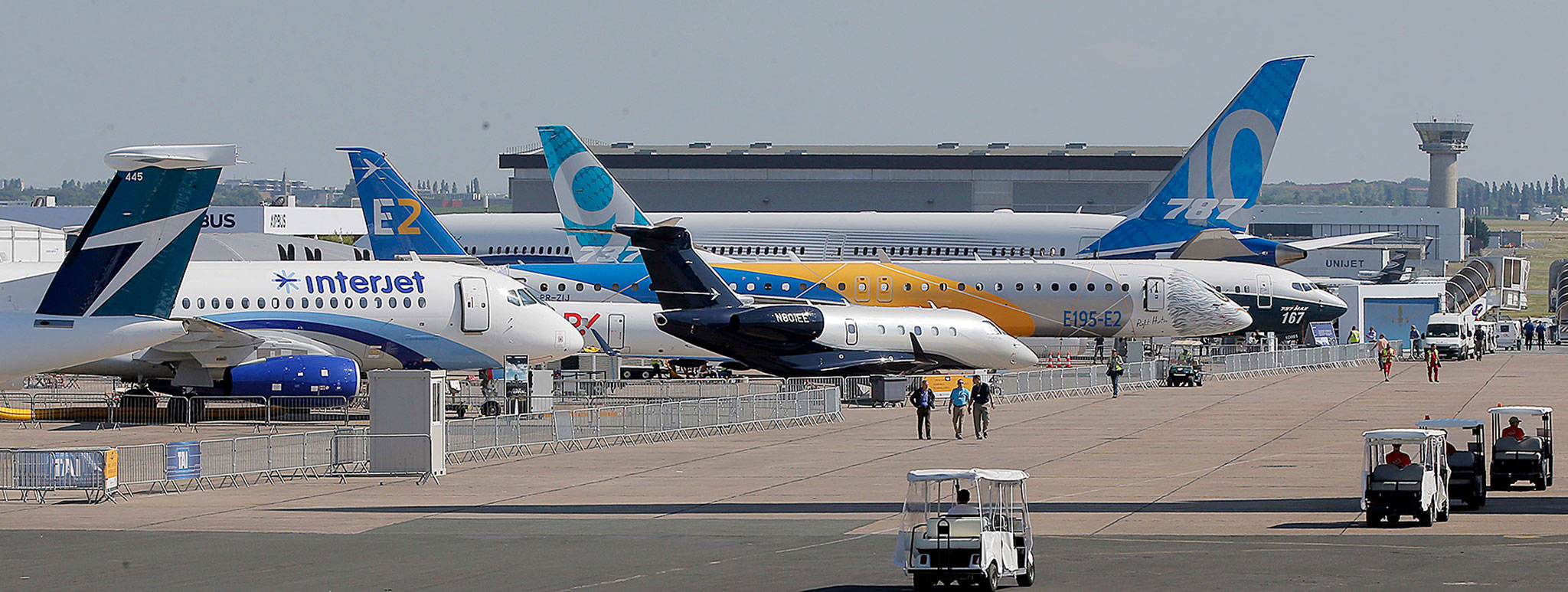EVERETT — Global rivals Boeing and Airbus came out gunning Monday, the opening day of the aerospace industry’s premier tradeshow, the Paris Air Show.
Bucking analysts’ expectations of a relatively quiet show, the corporate heavyweights opened with volleys of order announcements, hurriedly racking up deals worth billions of dollars.
The biggest news came early in the day when Boeing officially launched the 737 MAX 10, the largest version of its single-aisle jet. The company quietly has been shopping the narrowbody airplane around since at least March, and it was widely expected to commit to its production during the air show, which runs through June 25.
Boeing said it has more than 240 orders and commitments for the MAX 10 from more than 10 customers around the world. With a sticker price of about $125 million, the deals are worth approximately $30 billion at list prices. (Actual sales prices often are steeply discounted, especially for early customers for a new airplane.)
The aerospace giant also announced orders for 30 787-9s by AerCap, a deal worth $8.1 billion at list price.
Boeing is counting on the 737 MAX 10 to win back some of the single-aisle market slice dominated by Airbus’ A321neo. Prior to Monday, Boeing has struggled to win orders from customers looking for high-capacity, long-range narrowbodies. The smaller MAX 9 has only picked up a couple of hundred orders compared to more than 1,400 for the A321neo.
However, if Airbus execs see the MAX 10 as a warning shot across their company’s bow, they are not letting on in public. Outside Paris on Monday, Airbus’ top salesman, John Leahy, dismissed the MAX 10, saying it would only eat into the already anemic demand for the MAX 9, Reuters reported.
Airbus announced orders for 100 A320neos and 12 A321neos. It also said that it is launching an even bigger version of its superjumbo A380, the A380plus, with room for 575 passengers.
Boeing expects little — if any — demand for superjumbos in the next 20 years, said Randy Tinseth, Boeing Commercial Airplanes vice president for marketing, during a media briefing in early June. “We find it hard to believe that Airbus will be able deliver the rest of their A380s in the backlog.”
“I think the biggest plane in the (jetliner) market moving forward is going to be the 777X,” which is slated to be delivered by 2020, Tinseth said.
In all, the company forecasts global demand for 41,030 jetliners over the next 20 years, a market worth about $6 trillion at current list prices. Boeing released its updated forecast Tuesday.
The company expects the resilient growth in air travel since 1980 to continue in the coming decades. Asia will lead the growth, with China expected to generate about 20 percent of demand for new airplanes, according to Boeing’s Current Market Outlook for 2017 through 2036.
Demand for a middle-of-the-market airplane — larger than a 737 and smaller than a 787 — is expected to tally as many as 4,000 to 5,000 aircraft. The company believes that airlines will need most of those airplanes sooner than later in the next 20 years, Tinseth said.
Think of an airplane that can make it profitable for an airline to fly from Prague to Washington, D.C., and can operate in already crowded areas, such as U.S. transcontinental flights, he said.
Dan Catchpole: 425-339-3454; dcatchpole@heraldnet.com; Twitter: @dcatchpole.
Talk to us
> Give us your news tips.
> Send us a letter to the editor.
> More Herald contact information.

























